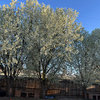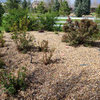Cover Crops - Local Advice?
pumpkin2010
13 years ago
Related Stories

EDIBLE GARDENSSummer Crop: How to Grow Blueberries
Plant blueberries in spring or fall for garden beauty through three seasons — and a sweet superfood in summer
Full Story
EDIBLE GARDENSSummer Crops: How to Grow Tomatoes
Plant tomato seedlings in spring for one of the best tastes of summer, fresh from your backyard
Full Story
FARM YOUR YARDIf You Have Room for Only One Summer Crop ...
Get an edible that’s long on flavor even if you’re short on space, with a long-time gardener’s favorite picks
Full Story
MOST POPULARSummer Crops: How to Grow Sunflowers
Savor snack-tastic sunflower seeds once the radiant blooms have faded — if the birds have saved you any, that is
Full Story
SPRING GARDENINGSummer Crops: How to Grow Strawberries
Pluck your own sweet strawberries right from the garden vine for smoothies, salads or eating then and there
Full Story
SUMMER FRUITS AND VEGETABLESSummer Crops: How to Grow Beans
Grow your own beans for amazing variety and healthy, convenient produce all summer
Full Story
EDIBLE GARDENSHow to Grow Your Own Sweet Summer Crops
This guide will help any gardener get started on growing the freshest warm-season veggies and berries for summer
Full Story
EDIBLE GARDENSSummer Crops: How to Grow Squash
Almost foolproof and with cheerful flowers, squash comes in a wide range of varieties to plant in spring
Full Story
FARM YOUR YARDAdvice on Canyon Farming From L.A.'s Vegetable Whisperer
See how a screened garden house and raised beds help an edible garden in a Los Angeles canyon thrive
Full Story
DECORATING GUIDES10 Design Tips Learned From the Worst Advice Ever
If these Houzzers’ tales don’t bolster the courage of your design convictions, nothing will
Full Story









mcfaroff
gjcore
Related Professionals
Lake Oswego Landscape Architects & Landscape Designers · Broomfield Landscape Contractors · Caldwell Landscape Contractors · Centereach Landscape Contractors · Essex Landscape Contractors · Gresham Landscape Contractors · La Mirada Landscape Contractors · Mendota Heights Landscape Contractors · Pleasant Prairie Landscape Contractors · Tustin Landscape Contractors · Eastlake Landscape Contractors · Attleboro Solar Energy Systems · Norwich Solar Energy Systems · Oakland Solar Energy Systems · Rosemount Solar Energy Systemsdigit
Dan _Staley (5b Sunset 2B AHS 7)
pumpkin2010Original Author
gjcore
jnfr
dsieber
dsieber
mstywoods
gjcore
mstywoods
gjcore